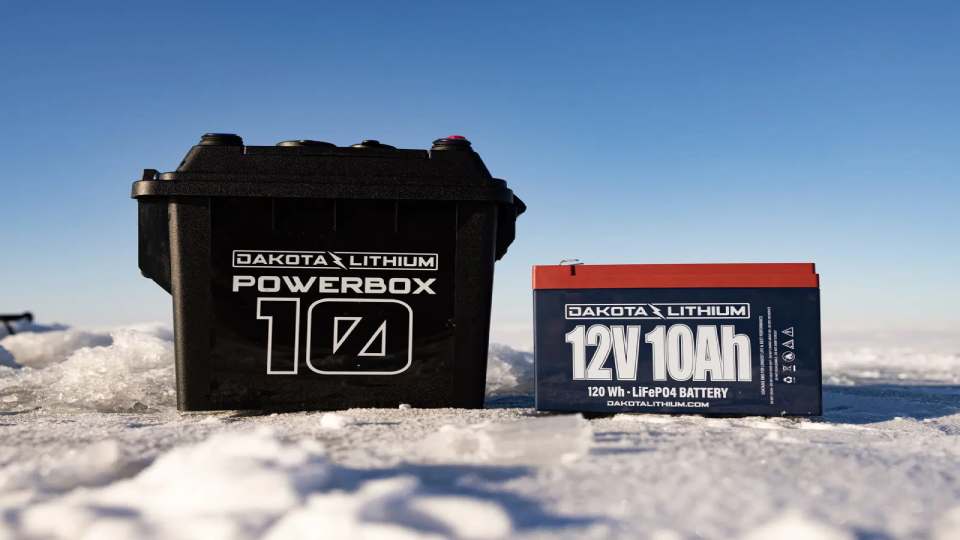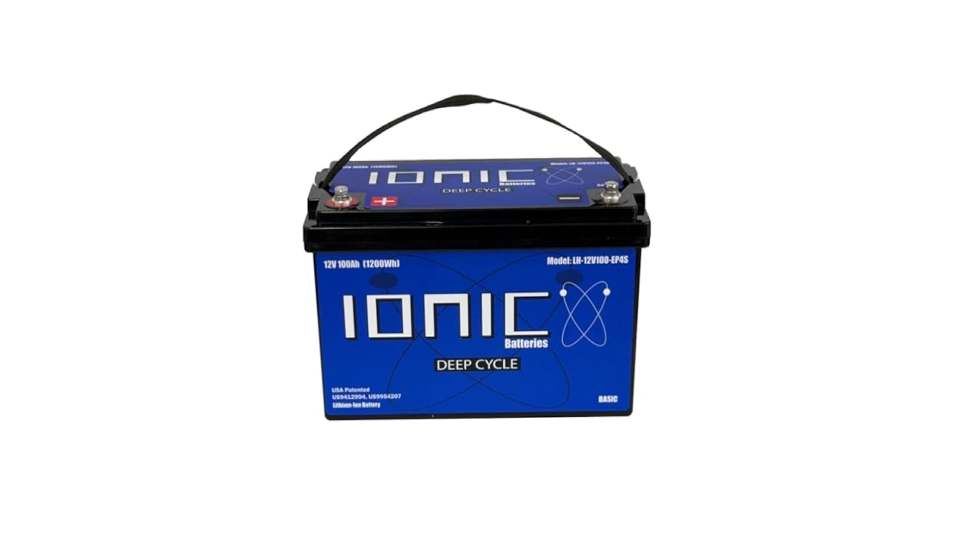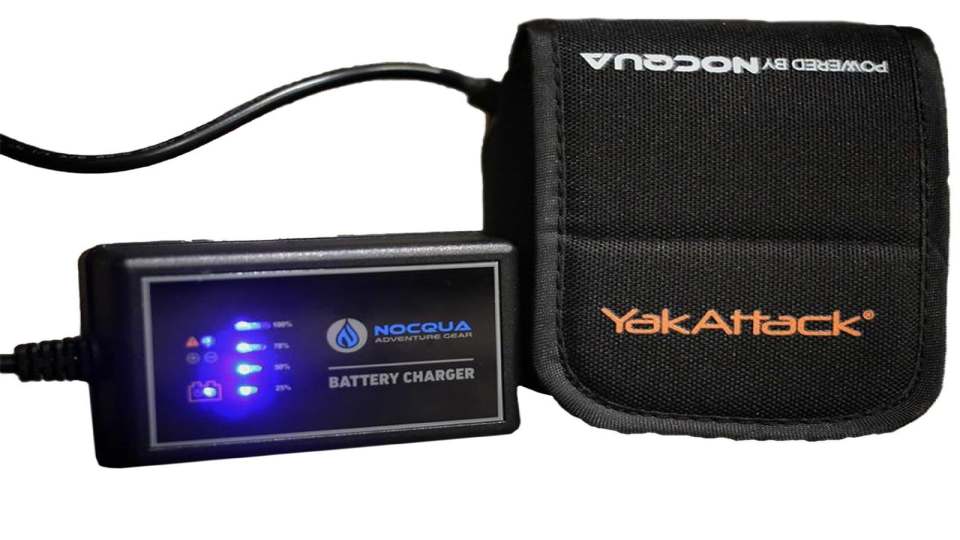The 5 Best Fish Finder Battery of 2025: Expert Tips for Selection and Care
Having the right fish finder battery can make all the difference on your fishing trips. A reliable battery ensures your fish finder stays powered, helping you locate fish efficiently and enjoy uninterrupted fishing sessions. In this guide, we’ll introduce the top 5 fish finder batteries in 2025, explain how to choose the right one, and provide practical tips for installation and maintenance. By the end, you’ll know which battery best suits your setup, whether you need a battery operated fish finder for short trips or a high-capacity battery for extended outings.
5 Best Fish Finder Batteries in 2025
Finding the right battery for your fish finder can be challenging, so we’ve compiled the top 5 options that cater to different needs—from high-capacity batteries for larger boats to compact, portable solutions for kayaks and small vessels.
1. EcoFlow 12V 100Ah Lithium Trolling Motor Battery
As a premium fish finder battery, the EcoFlow 12V 100Ah Lithium Trolling Motor Battery offers 1280Wh capacity, 300A instantaneous output, and EV-grade LFP cells lasting 6000+ cycles. With an IP65 waterproof rating and X-Guard BMS, it ensures durability in marine conditions. Additionally, it is 50% lighter and delivers 50% more energy than lead-acid batteries, making it ideal for fishing trips and long journeys that require consistent power.
EcoFlow 12V 100Ah Lithium Trolling Motor Battery
2. TM133 12.8V 33Ah Lithium Ion Battery
Compact and portable, the TM133 12.8V 33Ah provides 422Wh capacity and 65 reserve minutes—30% longer runtime than typical U1 lead-acid batteries. IP65 water-resistant with a built-in BMS, it protects against over-voltage, under-voltage, short circuits, and temperature extremes.
Great for a battery powered fish finder setup on kayaks or small boats.

3. Dakota 12V 10Ah Deep Cycle LiFePO4 Battery
This lightweight, durable lithium battery delivers twice the power and 8x the lifespan of SLA batteries. Ideal for powering fish finders and small marine electronics, it offers long-term reliability backed by an 11-year warranty.
Best for anglers seeking compact, long-lasting battery operated fish finder options.

4. Ionic Lithium 12V 100Ah LiFePO4 Deep Cycle Battery + Bluetooth
A versatile, high-capacity battery with 3,000–5,000 cycles and 900 CCA, perfect for bass boats, trolling motors, and off-grid use. Bluetooth monitoring lets you track battery status in real-time, while BMS protection and cold-weather safeguards ensure safety.
Perfect for anglers needing a battery for fish finder that also supports trolling motors and other marine electronics.

5. YakAttack Pro 10Ah Lithium-Ion Battery Power Kit
Ultra-portable at 1.4 lbs, this water-resistant rechargeable battery powers fish finders, LED lights, and other small electronics. Features include reverse polarity protection, dual circuit board safety, and a visual charge indicator.
Ideal for lightweight battery operated fish finder setups on kayaks or small boats, perfect for short trips.

What to Look for When Choosing a Fish Finder Battery
Choosing the right fish finder battery ensures reliable on-water performance. Different anglers need different capacity, chemistry and mounting options depending on boat size, fish finder type and trip length — use the factors below to match the battery to your setup:
1. Battery Type
When it comes to powering your fish finder, there are two main types of batteries to consider:
Sealed Lead Acid (SLA) Batteries: Traditional and reliable, but heavy and requiring more maintenance. They can be suitable for small boats or short trips but may not provide optimal runtime for modern fish finders.
Lithium-Ion Batteries: Lightweight, longer lifespan, and more efficient. These are often preferred for serious anglers who want consistent performance without the hassle of frequent charging.
For marine applications, it’s important to use a marine battery designed to withstand moisture, vibration, and harsh conditions. Lithium marine batteries, in particular, combine durability, portability, and high output—perfect for powering fish finders alongside other marine electronics.
2. Capacity and Runtime
Battery capacity, measured in amp-hours (Ah), determines how long your fish finder can run on a single charge. Larger batteries like the EcoFlow 12V 100Ah or Ionic 12V 100Ah can provide extended runtime for all-day fishing trips, while smaller batteries such as the TM133 33Ah or Dakota 10Ah are ideal for shorter trips or portable setups.
If you frequently fish in remote areas or need backup power for extended trips, consider investing in a portable power station.
For example, the EcoFlow RIVER 2 Max Portable Power Station can serve as a convenient power source not just for your fish finder, but also for lights, chargers, and other essential electronics.
3. Weight and Portability
The size and weight of the battery matter, especially if you fish from a kayak, small boat, or like to transport your equipment frequently. Lightweight lithium batteries are easier to carry and install, reducing strain while maintaining performance.
4. Durability and Safety
Look for batteries with built-in Battery Management Systems (BMS) that protect against overcharging, short circuits, and temperature extremes. A durable, waterproof battery ensures safety and consistent operation in unpredictable weather and marine conditions.
Tips for Installing and Caring for Your Fish Finder Battery
Proper installation and maintenance of your battery for fish finder not only ensures reliable performance but also extends the life of your battery. Here are some practical tips every angler should follow:
1. Correct Installation
Always follow the manufacturer’s instructions when installing your battery. Ensure that the terminals are properly connected and secured to prevent loose connections.
Place the battery in a stable, dry, and ventilated location on your boat or kayak. Avoid direct exposure to water or excessive heat.
Use batteries designed for marine use, like a marine battery, to ensure safety and durability in wet conditions.
2. Regular Charging and Monitoring
Charge your battery fully after each fishing trip to maintain optimal performance.
For lithium batteries, avoid letting the voltage drop too low, as this can reduce lifespan. Use the battery’s built-in indicators or a monitoring app if available.
3. Safe Handling
Always handle batteries carefully. Avoid dropping, puncturing, or short-circuiting the battery.
Keep battery terminals clean and free from corrosion. Regularly inspect the wiring and connections to ensure everything is secure.
4. Storage Tips
When not in use for extended periods, store your battery in a cool, dry place.
Check the battery’s charge periodically during storage and recharge as needed to prevent deep discharge.
5. Essential Fishing Gear Integration
A good battery is just one part of your fishing setup. Incorporating it into your fishing essentials ensures you have all the necessary gear for a smooth and enjoyable fishing experience. This includes your fish finder, lighting, chargers, and other electronics that rely on consistent power.
Conclusion
Choosing the right fish finder battery is key to enjoying a smooth and uninterrupted fishing experience. A well-selected and properly maintained battery ensures your fish finder delivers reliable performance, allowing you to focus on catching fish rather than worrying about power.
Integrating your battery with other fishing essentials creates a complete setup for all types of fishing trips. Whether you’re fishing from boat or exploring remote waters, a high-quality battery designed for your fish finder provides convenience, durability, and peace of mind on every adventure.
*The brands referenced in this article are provided for informational purposes only and do not indicate any partnership with EcoFlow.
FAQs
How long will a 12V battery run a fish finder?
Runtime depends on the battery’s amp-hour (Ah) rating and the fish finder’s power consumption. For example, a 12V 100Ah lithium battery can run a typical fish finder for 10–12 hours or more, while smaller 10–33Ah batteries may last 2–6 hours. Always check your device’s specifications and consider using a portable power station for extended trips.
Should my fish finder have its own battery?
Yes, it is recommended to use a dedicated battery for your fish finder, as this ensures consistent power without draining other electronics. This is especially important on small boats or kayaks where energy resources are limited. Using a separate, battery-operated setup for your fish finder provides stable performance, protects your main battery, and allows longer fishing trips without interruptions.
Do I need a deep cycle battery for a fish finder?
Yes, a deep cycle battery is recommended because it can provide steady power over long periods and withstand repeated charging cycles. Lithium deep cycle batteries, like LiFePO4 models, are ideal for fish finders, trolling motors, and other marine electronics, offering durability, lightweight design, and long lifespan compared to traditional lead-acid batteries.